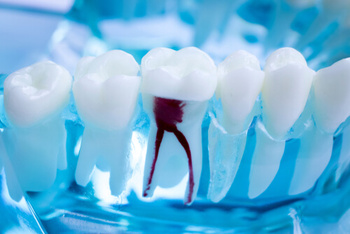
- Harris Dental Boutique
- root canal risks, root canal therapy, root canal treatment
- Complex Dentistry
A toothache that lingers can make daily life difficult. Have you ever wondered why some tooth pain becomes unbearable? When the inside of a tooth is damaged, simple fixes may not be enough to restore its health. That’s when a root canal is needed—it removes the problem while allowing the tooth to stay in place. What is a root canal? Many assume this endodontic treatment is painful, but advancements in dentistry have made it much more comfortable. Let’s take a closer look at what happens during this procedure and why it’s an important step in saving a tooth.
What Happens During the Root Canal Treatment Process?
To treat an affected tooth, a root canal procedure follows a series of essential steps aimed at restoring its health and function. This process is designed to eliminate infection while preserving as much of the natural tooth as possible.
Initial Examination and X-Rays

A thorough evaluation is the first step in this dental procedure. The dentist inspects the affected tooth and takes X-rays to assess the severity of the root canal infection. These images reveal the condition of the tooth pulp, surrounding bone, and root canal system, helping to create a precise treatment plan.
Numbing the Area for Comfort
To ensure a stress-free experience, local anaesthesia is applied around the infected tooth. Once the numbing effect takes hold, the dentist prepares to access the pulp chamber by making a small opening in the tooth’s surface.
Reaching the Infected Pulp
Through the created opening, dental tools are used to access and remove the infected pulp. The presence of infection in the dental pulp can cause significant discomfort, which is why eliminating the bacteria is necessary. Clearing out the damaged tissue stops the spread of infection and protects the remaining healthy structure.
Cleaning the Root Canal System
Thorough cleaning follows the removal of the infected pulp. The dentist flushes out bacteria using a sterilising solution to ensure that no traces of infection remain inside the root canal system. Special instruments help shape the canals, making them ready for the filling stage.
Filling and Sealing the Tooth
Once the canals are properly shaped and disinfected, they are filled with a special root canal filling material to prevent reinfection. Sealing the space inside the tooth strengthens the structure and keeps bacteria from entering again.
Closing the Opening
After filling the tooth, the opening is sealed with a temporary or permanent filling. This protects the treated area and restores some of the tooth’s function while a long-term solution is prepared.
Adding a Final Restoration
Since a treated tooth no longer has blood vessels inside to provide strength, a dental crown is often placed for added protection. This step ensures that the tooth remains strong enough for chewing and other daily functions.
What Are the Key Benefits of a Root Canal?
Prevents Tooth Loss
A root canal removes the damaged tissue inside the tooth while keeping its outer structure intact. This prevents the need for an extraction, which can lead to gaps in the smile.
Stops Discomfort and Sensitivity
An infected tooth often causes pain that worsens with time. Sensitivity to hot and cold foods or pressure while biting can make eating difficult. A root canal eliminates the source of pain by clearing out the damaged tissue inside the tooth. Once treated, the discomfort reduces, allowing normal activities without irritation.
Lowers the Risk of Future Complications
When a dental infection is left untreated, it may spread to surrounding tissues. Bacteria from an untreated tooth can affect the gums, jaw, and even other areas of the body. A root canal stops this from happening by removing the source of infection. This not only protects the treated tooth but also helps maintain overall dental health.
Improves the Strength of the Tooth
Even though an infected tooth may seem weak, it can still be saved through proper treatment. During a root canal, the inside of the tooth is cleaned and sealed to prevent further damage. A protective covering is placed over it, ensuring it remains strong for everyday use. With proper care, a treated tooth can last just as long as a healthy one.
Avoids the Need for Repeated Treatments
Dental infections can worsen over time, leading to repeated dental procedures if not addressed early. A root canal provides a long-term solution by treating the problem at its source. Instead of temporary fixes, this method ensures the tooth remains functional without the need for additional work in the future. Acting early prevents unnecessary discomfort and frequent dental visits.
Maintains the Natural Look of the Smile
A missing tooth can affect confidence and impact how a person speaks and eats. Root canal therapy helps retain the original tooth while keeping it healthy. Once the procedure is completed, the treated tooth blends with the rest of the teeth, maintaining a natural and even appearance. The smile remains unaffected, and daily interactions feel normal.
Prevents Damage to Nearby Teeth
When a tooth is lost, the remaining teeth may shift to fill the space. This can cause misalignment, leading to bite issues or uneven pressure on certain areas of the mouth. A root canal keeps the tooth in place, preventing unnecessary movement of surrounding teeth. By preserving the tooth, it helps maintain a balanced and comfortable bite.
Reduces the Risk of Bone Loss
The jawbone relies on healthy teeth to stay strong. Losing a tooth can cause the bone to weaken over time. Since a root canal saves the original tooth, it helps support the jawbone’s structure. This prevents unnecessary changes in facial appearance and ensures long-term stability.
Choosing a root canal is a reliable way to protect a damaged tooth while avoiding extraction. This treatment not only removes infection but also helps keep the tooth strong and functional. By stopping discomfort, preventing complications, and maintaining a natural smile, this procedure offers a long-lasting solution. Seeking timely treatment can help prevent further issues, keeping your teeth in the best possible condition.
What Are the Main Aspects That Affect Root Canal Treatment Pricing?
Tooth Location and Complexity
Where the tooth is positioned in the mouth plays a major part in determining the price of treatment. Molars at the back have more canals, requiring extra time and effort to clean and seal properly. Front teeth, on the other hand, usually have fewer canals and are easier to access, which can result in a lower cost.

Condition of the Tooth
A mild issue can be resolved with minimal work, while a deeply infected tooth may require a more detailed approach. The extent of damage affects the number of steps needed to complete the procedure. If the infection has spread further, additional work may be required to prevent further complications.
Skill and Experience of the Dental Professional
A dental professional with extensive experience may charge higher fees for their expertise. Their level of knowledge ensures a precise and well-executed treatment, reducing the risk of future problems. While the cost may be slightly higher, many patients opt for experienced professionals to ensure successful results.
Use of Advanced Technology
Modern technology can make the treatment more precise and efficient. Digital imaging, specialised tools, and high-quality materials can enhance the process. The use of advanced equipment can lead to a smoother experience, though it may also add to the total cost.
Additional Procedures Involved
In some cases, a tooth may need extra treatment before or after the procedure. If further protection is needed, a crown may be recommended to reinforce the structure. Some cases may also require additional cleaning or reshaping before the final sealing, increasing the total expense.
Materials Used in the Procedure
Different materials may be used based on the treatment plan. Higher-quality materials that provide long-lasting protection may result in a higher fee. Choosing durable options can improve the lifespan of the restored tooth.
Several factors contribute to the total cost of a root canal. The complexity of the procedure, the expertise of the professional, and the use of advanced tools all impact the final amount. Understanding these elements allows for better planning and ensures informed decisions about treatment. Seeking care from an experienced professional ensures a successful procedure and lasting results.
How Can You Look After Your Teeth After a Root Canal?
A treated tooth needs proper care to stay strong and function well. Following the right steps helps in maintaining its condition while preventing future issues. Simple daily habits can protect the tooth and ensure it remains in good shape.
Keeping the Treated Tooth Clean
Maintaining cleanliness is one of the most important steps in caring for a treated tooth. Using a soft-bristled toothbrush helps in removing plaque without putting too much pressure on the area. Gentle brushing in circular motions ensures that the surface stays free from buildup. Flossing should also be done carefully, sliding the floss gently between the teeth without snapping it against the treated area. Using an antibacterial mouth rinse adds an extra layer of protection by reducing harmful bacteria.
Avoiding Excess Pressure While Chewing
After treatment, it is best to avoid using the treated tooth for chewing hard foods. Excessive force can cause strain on the tooth, affecting its stability. In the first few days after the procedure, chewing on the opposite side of the mouth helps in reducing unnecessary pressure. Cutting food into smaller pieces and opting for softer textures can make eating more comfortable. Even after the tooth settles, it is good practice to avoid chewing on non-food items like pens, fingernails, or ice cubes.
Paying Attention to Sensitivity
Some sensitivity may occur after the procedure, but this should lessen over time. A treated tooth can react to temperature changes in the beginning, but this is usually temporary. Using toothpaste made for sensitivity can provide relief while keeping the area protected. If discomfort continues or worsens, a dentist should be consulted to check if any adjustments are needed.
Attending Follow-Up Visits
A follow-up visit is necessary to ensure that the tooth is healing well. During this appointment, the dentist checks if the treated area is responding as expected. They may also examine the surrounding teeth to make sure there are no additional concerns. Skipping follow-up visits can delay the detection of any minor problems that could be easily fixed.
Avoiding Biting Hard Objects
Even after healing, a treated tooth should not be exposed to excessive force. Biting into hard foods or objects can weaken the area over time. It is important to avoid chewing on ice, hard candies, and similar items. Being mindful of this helps in preventing unnecessary stress on the tooth.
Managing Teeth Grinding
Grinding or clenching the teeth can put pressure on the treated tooth. Some people grind their teeth while sleeping without realising it. Wearing a night guard can help in reducing strain and preventing future damage. If grinding is a problem, discussing it with a dentist can help in finding the best solution.
Proper care ensures that a treated tooth stays strong and healthy. Keeping it clean, avoiding unnecessary pressure, and following the dentist’s instructions all contribute to long-term success. If any unusual discomfort arises, seeking professional advice is always the best approach. Regular check-ups help in maintaining the treated tooth, allowing it to function well for years to come.
What Foods Are Best to Eat After Completing Root Canal Treatment?
Choosing the right foods can make the healing process smoother and prevent unnecessary discomfort.
Soft Foods That Won’t Strain the Treated Tooth
A gentle approach to eating helps protect the treated area. Mashed potatoes are a great choice because they are smooth and require little effort to chew. Cooked pasta with a soft texture can also be enjoyed without putting pressure on the tooth. Scrambled eggs provide protein and are easy to consume without irritation. Pureed vegetables, such as pumpkin or carrots, supply essential nutrients while being gentle on the mouth.
Hydrating Foods That Help Maintain Comfort
Moist foods can prevent dryness and promote healing. Smoothies offer a refreshing option while being easy to consume. Soft fruits like bananas and avocados provide natural hydration and essential vitamins. Drinking enough fluids, including water and herbal teas, helps in maintaining comfort and preventing the mouth from feeling dry. Consuming foods with a high water content can contribute to a smoother recovery.
Dairy Choices for Strength and Recovery
Dairy products offer calcium, which supports the overall strength of teeth. Yoghurt is a good option since it is soft, nutritious, and soothing. Cottage cheese provides protein without requiring chewing. A small portion of cheese or a glass of milk can help maintain dental health while avoiding strain on the treated area.
Protein-Rich Options That Are Gentle on the Mouth
Adequate protein intake is essential after a root canal. Soft-cooked fish is a great source of protein without being difficult to eat. Blended soups containing beans or lentils offer nourishment while being gentle on the tooth. Ground turkey or chicken, when prepared in a soft texture, can be included in meals without causing discomfort.
Soft Vegetables That Provide Essential Nutrients
Vegetables contain vitamins that support healing. Steamed zucchini and squash are soft enough to eat while being rich in nutrients. Leafy greens can be blended into a smoothie or soup to make them easier to consume. Mashed peas and carrots provide important minerals while requiring little effort to chew.
Foods That Need to Be Eaten Carefully
Although some foods are safe, they should be consumed with care. Bread and rice can be included in meals but should be chewed slowly to avoid small pieces irritating the treated area. Certain fruits like pears should be softened before eating to prevent unnecessary pressure on the tooth. Choosing foods that are easy to manage can help prevent discomfort while allowing for a smoother recovery.
Following a root canal, selecting the right foods makes a significant difference in healing. Soft meals provide essential nutrients without straining the treated area. Staying hydrated and including a variety of vitamins and minerals ensures that the recovery process remains comfortable. By making mindful food choices, the treated tooth stays protected while overall well-being is supported.
Protect Your Smile by Acting Early

A toothache that won’t go away could be a sign that you need a root canal. Ignoring the pain might lead to swelling or increased sensitivity, making daily activities uncomfortable. Root canal treatment helps protect your natural tooth and restores its function when addressed on time. If left untreated, a tooth pulp infection can spread, affecting the surrounding tissues and causing further complications. Seeking treatment early not only relieves discomfort but also prevents the need for more extensive dental work. With the right care, your treated tooth can last for many years.
Our experienced team is here to make the process as smooth and comfortable as possible. A simple visit can give you the answers you need and a plan for relief. Don’t wait any longer—call us at 07 4158 5813 to schedule your appointment and get the right care today.
Note: Any surgical or invasive procedure carries risks. Before proceeding, you should seek a second opinion from an appropriately qualified health practitioner.
References
https://www.healthdirect.gov.au/root-canal-treatment
https://www.betterhealth.vic.gov.au/health/conditionsandtreatments/root-canal-treatment





